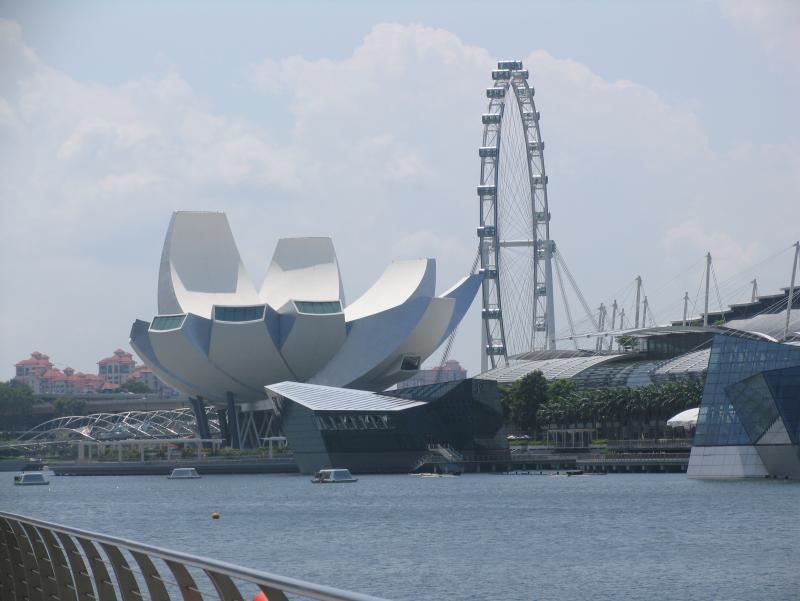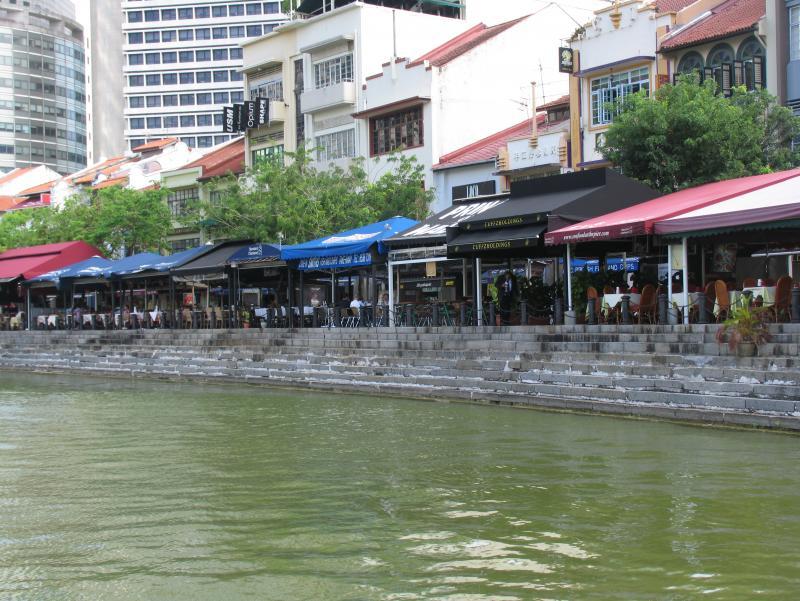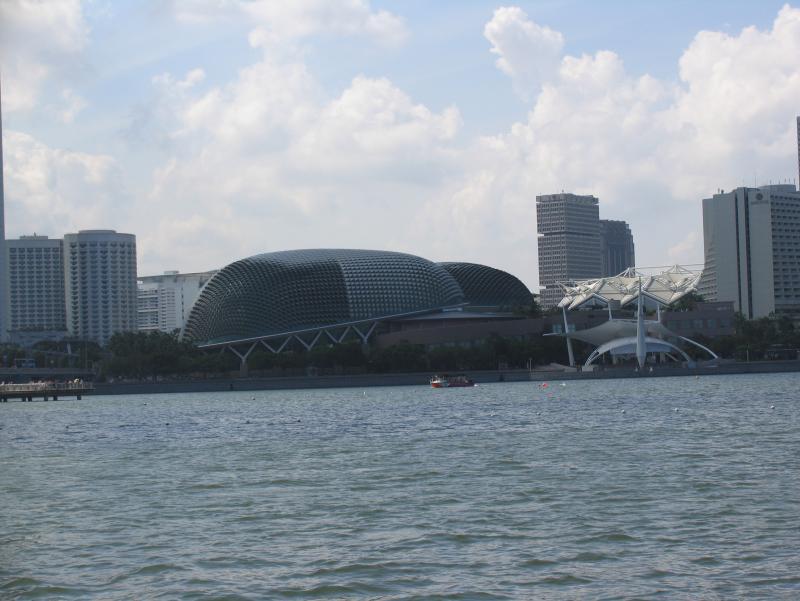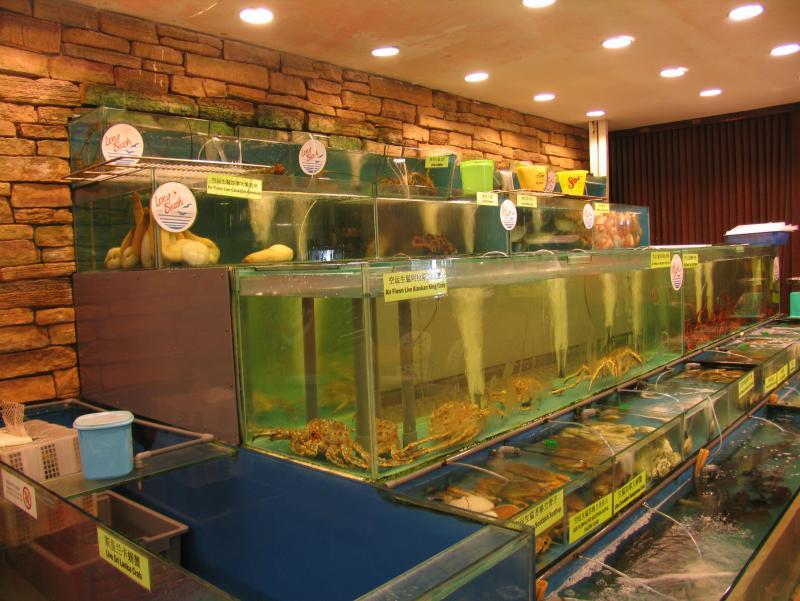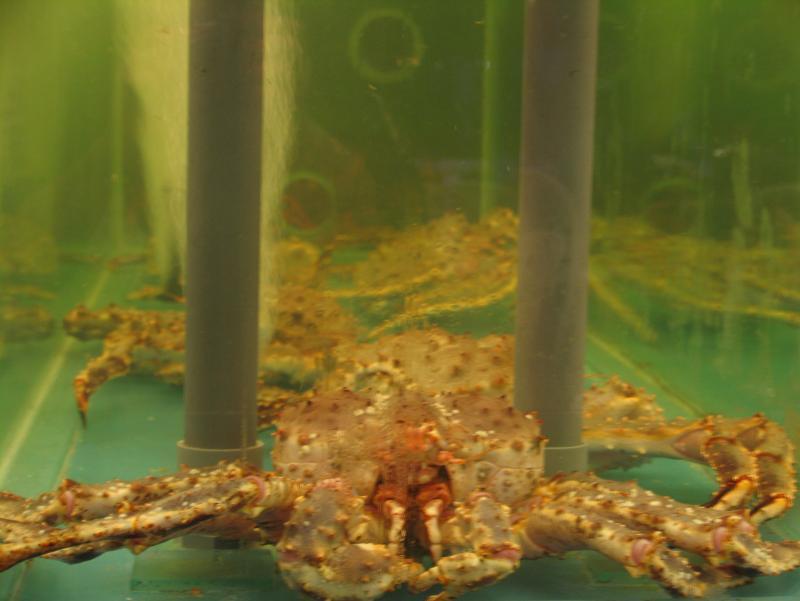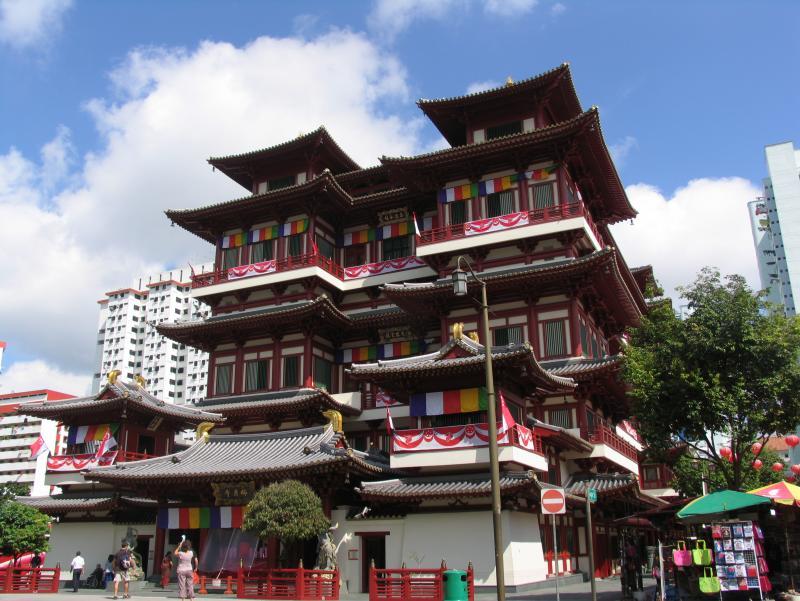
KennethT
participating member-
Posts
6,941 -
Joined
-
Last visited
Content Type
Profiles
Forums
Store
Help Articles
Everything posted by KennethT
-
Singapore and brief excursion to Thailand food blog
KennethT replied to a topic in Elsewhere in Asia/Pacific: Dining
Huiray, the kailan you posted on the other thread is very different from what we had in Singapore, although I have had the one you linked to... I used to grow it! I would commonly bring it to my local Chinese take out joint for them to add to a stir fry, and the first time, they looked at me like I was crazy - they had never seen it before.... the ones ubiquitous in S'pore were leafy, but didn't really have any stems to speak of. They almost looked like individual leaves of very large brussels sprouts, but with a different flavor and texture. ETA: I have never seen anything other than the standard mature kailan in Manhattan's chinatown... I don't go there very often (maybe once a month) but I still have never seen anything other than that there... not to say that something else doesn't show up from time to time. Unfortunately, I haven't been able to spend any significant time at Flushing's chinatown, so I can't answer about that. And also, unfortunately, I don't have enough free time to go there on a regular basis to look for produce... hopefully that will change one day... -
Yes, a deep fryer would be fantastic! The torch I have is a searzall hose torch which produces a large 'swirl' flame. It makes a big flame, and I've never had an issue with torch taste. Plus, an added bonus is that the tank hangs from your belt and you can then use the torch at any angle, whether the canister is full or almost empty.
-
When I do long low temp cooks, I'll presear with the propane torch, rather than in a pan. I find it much easier to get into all the crevices with the torch, and I've never had a problem. Then again, I could have just gotten lucky and not had the spoilage bacteria present in the first place... we'll never know!
-
Was just there this afternoon, and in addition to the frozen ones they always have, they have fresh ones in the refrigerated case. There is a sign next to them that says they are 2 days from farm to the store...
- 1 reply
-
- 2
-

-
Very interesting... thanks for the explanation - although I can never imagine myself walking into a restaurant's kitchen and poking around their supplies! I wonder if someone has made a text recognition phone app that you could use to take pictures of menus and have the app translate into other languages... but that's another topic!
-
Thanks for posting these... I'm enjoying this thread. What percentage of restaurants like this in your area have menus already translated into English? Also, are there people who work in the restaurants who speak any English? I guess my real question is, if one were to order from the English menu, would anyone be there to understand what one is ordering? The menus are quite extensive. If a non-Chinese speaking person were to go to a restaurant without an English menu, would they be able to get by? It's easy to get by in restaurants that only serve a few dishes, but other than looking at what is served on other tables and pointing, do you have an idea of how a non-Chinese speaker would fare?
-
What happened with your ribs has happened to others and discussed at length on the original sous vide thread. Sometimes there is a surface bacteria that can cause this problem. The way a lot of people get around it now is to sear or torch prior to bagging, or dip into boiling water for 30 seconds or so after bagging, to kill all surface bacteria. Theoretically, the interior of the meat should be sterile unless otherwise manipulated (like jaccarding, etc) This problem has come up with a few low temp long time proteins, but I remember short ribs being especially 'popular' - but that could also be due to the fact that they were very popular to make....
-
glad to hear it!
-
I agree - once you add the peach juice, using a more expensive sparkler is just a waste (just as long as the one you've got isn't faulted, which most mass market products never are).. next time, try some peach puree rather than peach syrup... even better! Thanks for taking us along this journey with you... it's been fascinating! Love it!
-
I agree - I can't see what the pulley puller would push against either.... a torch is an interesting idea too, but I didn't know what material the samovar was made from - if it's something that conducts heat well, then both parts will expand at equal rates, and may not help... but I think it's worth a shot. Edit, the torch may not be a good idea, or you'd need to be really careful, if there are any rubber gaskets in the valve. But if it's metal on metal, it should be ok.
-
Can you try tapping it with a hammer or something (without damaging it)? Sometimes, a sharp impact will loosen the scale and free it so that you can remove it and clean it completely.
-
great post, thank you! Also, beautiful photos...
-
I thought Cosme was great the last time I was there (in the early spring?) and would have highly recommended it, but lately, the reviews have been less than stellar. Notably, they discuss spotty prep quality and service - although, when I was there, my server was great - we had a 15 minute discussion about Mezcal... needless to say, he was very knowledgable...
-
What do you think caused the problem? Did you use an aluminum pot?
-
I couldn't have said it better... thank you!
-
Singapore and brief excursion to Thailand food blog
KennethT replied to a topic in Elsewhere in Asia/Pacific: Dining
Science Center and the Singapore Flyer... Nope, nothing to do in S'pore.... Boat tour of the harbor and river... Gives great views of the city, and is packed with information about the country's early history. Tons of food and bars at Boat Quay.... also tons of tourists! For even more, head to Clarke Quay: "The Durians" - what the locals call the Singapore Opera House... The spiky shapes are devices used to shade the building to help keep it cool. -
Singapore and brief excursion to Thailand food blog
KennethT replied to a topic in Elsewhere in Asia/Pacific: Dining
Here's the East Coast Seafood Centre at sunset: Outdoor dining: Chili crab: Tanks of live seafood: RRRRAAAAHHHHHHHH!!!!!! -
Singapore and brief excursion to Thailand food blog
KennethT replied to a topic in Elsewhere in Asia/Pacific: Dining
I wish this place was open when we tried to go. We were there 3 years ago, and it was amazing, and, according to a bunch of blogs, it's still the best Bak Chor Mee (minced pork noodle) around... It's a bit out of the tourist areas, but still not inconvenient to get to - just take the MRT to the Lavender stop (only a couple stops out of the city center), and then walk a couple blocks... Check out this line - almost as long as the Outram Park Char Kway Teow: -
Singapore and brief excursion to Thailand food blog
KennethT replied to a topic in Elsewhere in Asia/Pacific: Dining
OK, as promised, here's some more info for anyone potentially traveling to S'pore... We thought this was a very interesting Buddhist temple, conveniently located a few blocks from the Chinatown MRT station. Conveniently, it is enroute to: The Maxwell Food Centre - home of the very famous Tian Tian Chicken Rice (written about at the top of this thread). There are actually several chicken rice stalls in this center - one of them supposedly run by an ex Tian Tian employee. -
Singapore and brief excursion to Thailand food blog
KennethT replied to a topic in Elsewhere in Asia/Pacific: Dining
They are certainly going strong - they were packed the night we were there. Every table full. And both the sambal pomfret and chili crab were fantastic. I just wish we had more people with us so that we could have ordered more dishes. -
Singapore and brief excursion to Thailand food blog
KennethT replied to a topic in Elsewhere in Asia/Pacific: Dining
That's really funny, we actually went (and I posted about it above) to the place linked above - Old Lai Huat... -
Singapore and brief excursion to Thailand food blog
KennethT replied to a topic in Elsewhere in Asia/Pacific: Dining
At the current time, comparing apples to apples, HK is definitely more expensive than S'pore. When we were in S'pore, we got a great deal on a fantastic hotel - 3 nights for the price of 2... which applied to our 6 nights for the price of 4. That deal is going on for the next several months, and other hotels have similar ones like it. Also, in general food is much cheaper in S'pore, especially if focusing on local foods like hawker centers and cze char. Hong Kong has doesn't have near the variety of inexpensive foods, although to be honest, we didn't really focus on that type of food when we were there. I wanted to focus on dim sum and Cantonese cuisine - neither of which are inexpensive. Transportation is about equal - subway (I think it's called MTR in HK) is great - cheap, efficient, clean, safe... I'd say about equal to S'pore. Same with taxis... -
Singapore and brief excursion to Thailand food blog
KennethT replied to a topic in Elsewhere in Asia/Pacific: Dining
Huiray - I definitely agree. Those dishes were for the entire table (there were 3 of us), and there was plenty of rice to be had. While it didn't seem like a lot of food, the 3 of us were definitely sated at the end. I understand the differences between SHCR and MHCR, but personally, the chicken itself is the least important to me. First is the chili sauce, and then the rice. I have made it at home with a very chicken=y chicken, and it is different, but again, the sauce and the rice come first for me. I don't know why I feel the need to defend myself for deciding to return to S'pore for the second time. Although we've technically been there 3 times, I don't really count the first time since we were only there for 1 day - and we were getting over jetlag. In any case, we typically haven't made the habit of returning to a place since there are so many other places we want to see and experience, and we only usually get 1 trip per year. However, when we were planning this trip, I had just finished an extremely stressful 1.5 years working 7 days/week, 12 hours/day.... I usually like a bit of adventure to our trips - going to places that don't speak much English, a bit off the beaten track (for Americans) - but this time, i really just needed time to decompress and relax. While I love trips to 'challenging' places, I really just wanted somewhere interesting, but not that challenging... and S'pore fit the bill perfectly. It is a totally different experience than going to other places... definitely much more civilized. 2 years ago, we went to Bangkok for about a week, and while it is certainly not off the beaten track for western tourists, it is a much more stressful trip than S'pore. Yes, English is widely spoken, and I can get by with rudimentary Thai, the infrastructure is terrible - it takes forever just to get anywhere unless you're coming from and going to areas right near the skytrain. Plus, no matter where you go, there are tons of 'helpful' people looking to steer you in the wrong direction for some sort of financial gain. No, it is not a dangerous place (no violent crime), but there are people looking to rip you off at every turn, so you must be constantly wary of this, which is in itself a little exhausting. Plus, just walking around there is very frustrating as the sidewalks are like 3 feet wide, and 2.5 feet of it are taken up with vendors selling things. So it's difficult to leisurely walk down the street. S'pore is the polar opposite of this, which is what I really needed lately. Another good trip was Hong Kong - which, like S'pore, is orderly, clean and efficient, but also a nice contrast from most places in the west... and while I loved HK, personally, I like S'pore more because of the garden-feeling you get there (I love seeing/growing plants), it's a bit more laid back, and it is more ethnically diverse. Hopefully, as my stress levels decrease, I'll redevelop an interest into more 'challenging' locations, like Central Vietnam (we've already been to Hanoi), Malaysia, Indonesia, and of course, many upcoming trips to mainland China. Oh, and by the way, I'd say that S'pore does more than resemble a 'First World city'... it truly is one. Most of what many would consider the attributes to distinguish 1st and 3rd would clearly put S'pore in the 1st, and NY in the 3rd, except that NY's water quality is excellent and disease is not an issue.

